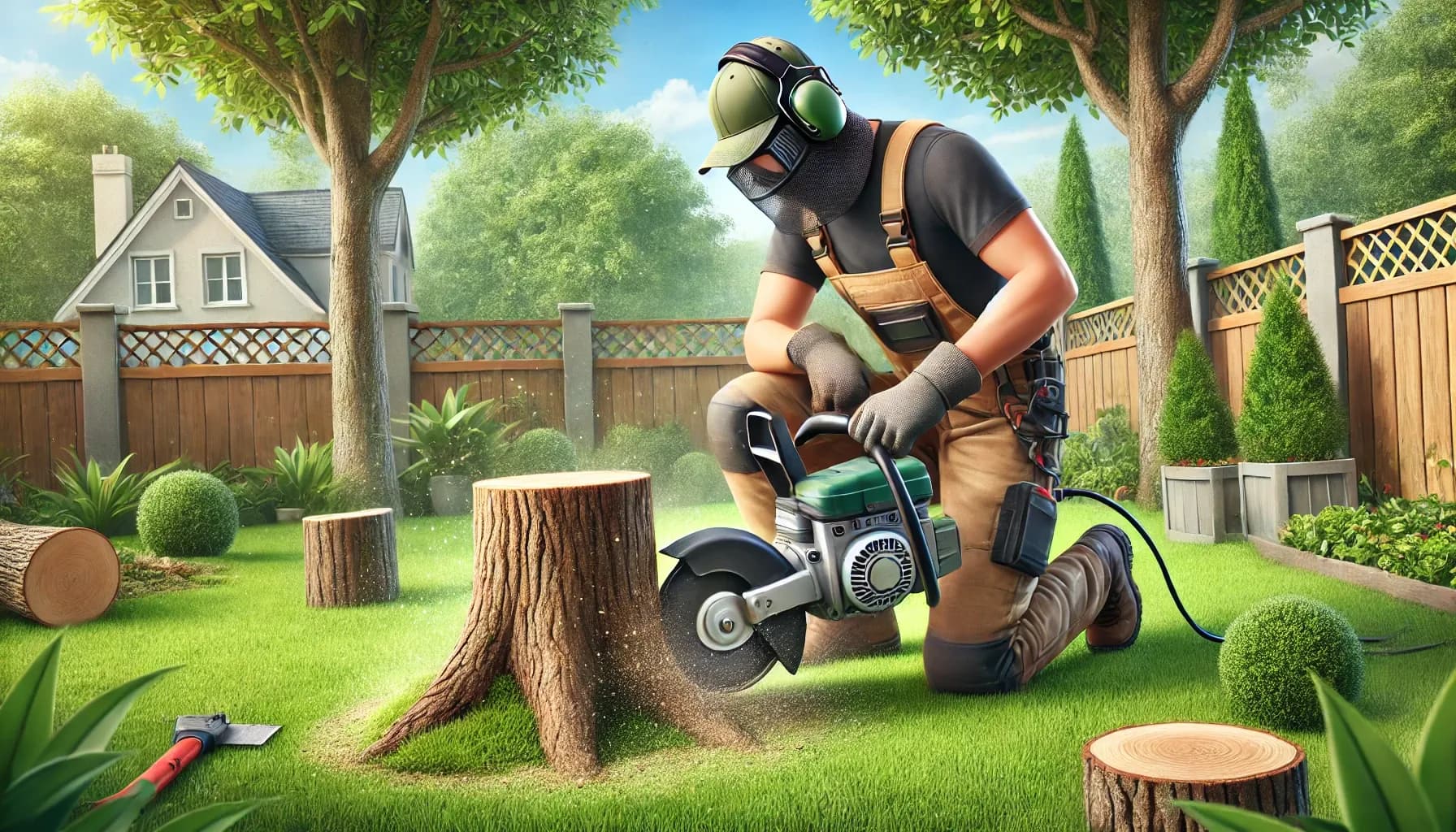The Ultimate Guide to Professional Stump Removal
Removing tree stumps is an essential part of maintaining a clean, safe, and visually appealing yard. Whether you’ve recently cut down a tree or inherited a property with lingering stumps, taking the time to address them is critical!

Why Removing Stumps Is Essential
Tree stumps may seem harmless, but they can cause several problems when left unattended:
Pest Infestations: Stumps can attract termites, ants, and other pests that may spread to your home.
Unwanted Regrowth: Leftover stumps can sprout new shoots, creating additional maintenance.
Aesthetic Concerns: Stumps disrupt the appearance of your yard, leaving it looking unfinished.
Safety Risks: Hidden stumps can be tripping hazards and may damage lawnmowers or other equipment.
Removing stumps promptly ensures your yard remains safe, healthy, and visually appealing.
Effective Stump Removal Methods
Here are the most popular ways to remove stumps, each with its own advantages:
1. Manual Stump Removal
Ideal for smaller stumps, this method involves using basic tools to physically remove the stump.
Tools Needed: Shovel, axe, pickaxe, hand saw, and digging bar.
Steps:
Dig around the stump to expose the roots.
Use a saw or axe to cut through the roots.
Pry the stump out with a digging bar or pickaxe.
Pros: Cost-effective and doesn’t require specialized equipment.
Cons: Time-consuming and physically demanding, better for small to medium stumps.
2. Chemical Stump Removal
Chemical stump removers speed up the decomposition process, making it easier to remove the stump.
Tools Needed: Stump remover, drill, water, axe, or shovel.
Steps:
Drill holes into the stump and apply the chemical remover.
Add water to activate the chemical and let the stump decompose over several weeks.
Remove the softened wood once it’s decayed enough.
Pros: Minimal physical effort and suitable for larger stumps.
Cons: Slow process and involves chemical use, which may not appeal to everyone.
3. Burning the Stump
In remote areas where allowed by law, controlled burning can be a practical solution.
Tools Needed: Drill, kerosene or fuel oil, matches, and safety gear.
Steps:
Drill holes into the stump and fill them with kerosene.
Let the kerosene soak in before lighting the stump.
Monitor the fire closely until the stump burns down completely.
Pros: Quick and efficient for large stumps.
Cons: Fire hazards, environmental concerns, and restricted in many areas.
4. Stump Grinding
For fast and efficient removal, stump grinding is a top choice. It involves grinding the stump down to ground level or below.
Tools Needed: Stump grinder (available for rent), safety goggles, gloves, hearing protection.
Steps:
Position the grinder over the stump and operate as per instructions.
Grind the stump until it’s level with or below the ground.
Dispose of the wood chips and fill the hole with soil.
Pros: Works for stumps of all sizes and is quick.
Cons: Equipment rental can be costly, and the machine requires skill to operate.
5. Hiring Professionals
For a hassle-free solution, hiring a professional tree care service is the most convenient option.
Steps:
Contact local stump removal services for quotes.
Schedule a visit and let the experts handle the job.
Pros: Quick, efficient, and no effort required on your part.
Cons: Higher cost compared to DIY methods.
Preparation for Stump Removal
Before starting, consider these tips to ensure a smooth process:
Assess the Stump: Larger stumps may need heavier equipment, while smaller ones can be handled manually.
Check Local Laws: Verify restrictions on burning or chemical use in your area.
Wear Safety Gear: Always use protective equipment, especially when working with grinders, saws, or chemicals.
What to Do After Stump Removal
Once the stump is gone, there are a few steps to complete the job and improve your yard:
Fill the Hole: Use soil or dirt to fill in the hole, leveling the ground.
Replant or Landscape: Replace the stump with grass, flowers, or even a new tree. Alternatively, add a garden feature or hardscaping element.
Reuse Wood Chips: If you’ve used a grinder, the leftover wood chips can be repurposed as mulch or compost.
Choosing the Right Method
Selecting the best stump removal method depends on your specific needs:
Manual Removal: Best for smaller stumps and minimal budgets.
Chemical Treatments: Ideal for those who don’t mind waiting and want low physical effort.
Burning: Practical for remote areas where regulations allow.
Stump Grinding: The fastest and most effective method for larger stumps.
Professional Services: Perfect for those who value convenience over cost.


